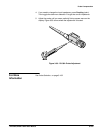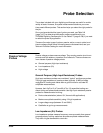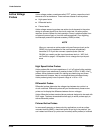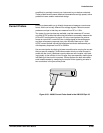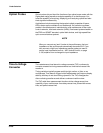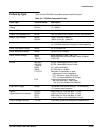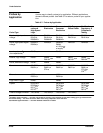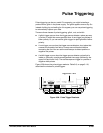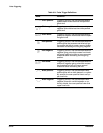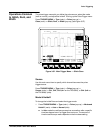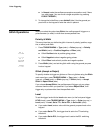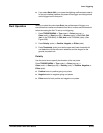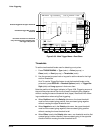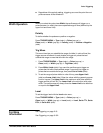
TDS 620A, 640A & 644A User Manual
3Ć109
Pulse Triggering
Pulse triggering can be very useful. For example, you might be testing a
product with a glitch in the power supply. The glitch appears once a day. So
instead of sitting by and waiting for it to appear, you can use pulse triggering
to automatically capture your data.
There are three classes of pulse triggering: glitch, runt, and width.
H A glitch trigger occurs when the trigger source detects a pulse narrower
(or wider) in width than some specified time. It can trigger on glitches of
either polarity. Or you can set the glitch trigger to reject glitches of either
polarity.
H A runt trigger occurs when the trigger source detects a short pulse that
crosses one threshold but fails to cross a second threshold before
recrossing the first. You can set the oscilloscope to detect positive or
negative runt pulses.
H A width trigger occurs when the trigger source detects a pulse that is
inside or, optionally, outside some specified time range (defined by the
upper limit and lower limit). The oscilloscope can trigger on positive or
negative width pulses.
Figure 3Ć56 shows the pulse trigger readouts. Table 3Ć8, on page 3Ć110,
describes the choices for pulse triggers.
Trigger Class = Runt
Figure 3Ć56:ăPulse Trigger Readouts



